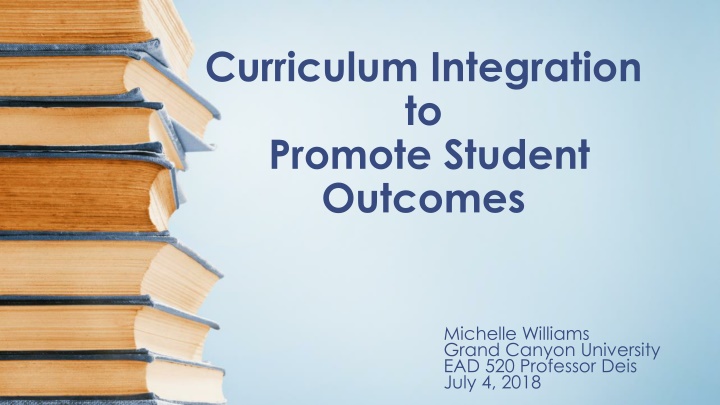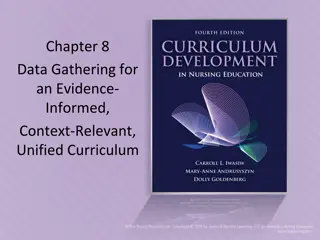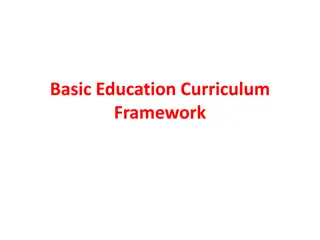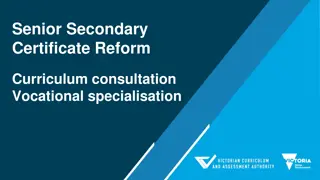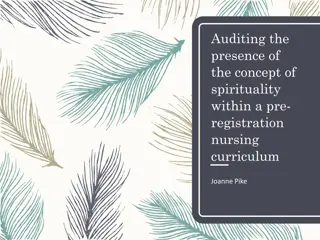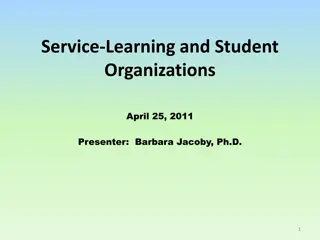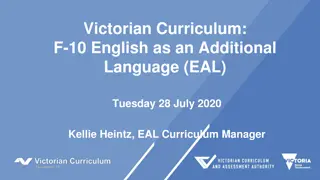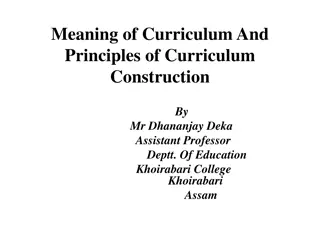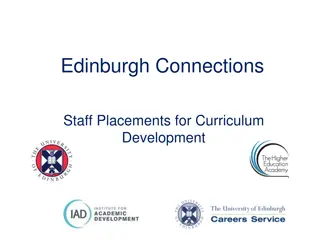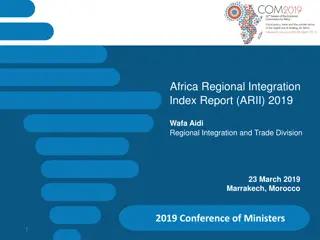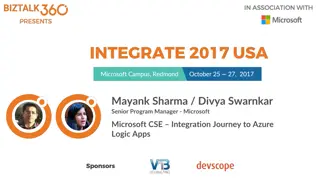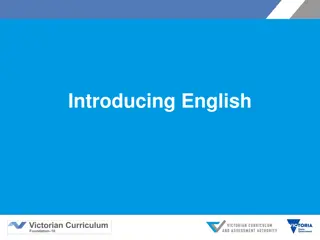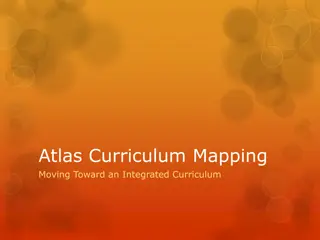Enhancing Student Learning Through Curriculum Integration
This educational material focuses on promoting student outcomes through curriculum integration. It covers implementing a non-culturally biased curriculum, supporting differentiated learning needs, using technology for instruction enhancement, and integrating vision and mission into lessons. Strategies such as fostering cultural awareness, differentiation in instruction, technological integration, and aligning lessons with the school's mission and vision are discussed to maximize student growth and success.
Download Presentation

Please find below an Image/Link to download the presentation.
The content on the website is provided AS IS for your information and personal use only. It may not be sold, licensed, or shared on other websites without obtaining consent from the author.If you encounter any issues during the download, it is possible that the publisher has removed the file from their server.
You are allowed to download the files provided on this website for personal or commercial use, subject to the condition that they are used lawfully. All files are the property of their respective owners.
The content on the website is provided AS IS for your information and personal use only. It may not be sold, licensed, or shared on other websites without obtaining consent from the author.
E N D
Presentation Transcript
Curriculum Integration to Promote Student Outcomes Michelle Williams Grand Canyon University EAD 520 Professor Deis July 4, 2018
Implementing a Non-Culturally Biased Curriculum A non-culturally biased curriculum welcomes differences in all students and works to eliminate biases and unfairness. We can eliminate Cultural biases in teaching by: Becoming culturally aware of the students that you teach. Helping students develop self awareness and an appreciation for the cultures of other students. Model tolerance Provide cooperative learning opportunities among students. Celebrate other languages spoken in the classroom.
Supporting Differentiated Learning Needs Differentiated instruction is the approach that we take in teaching our students with different abilities in the same class. It is how we as teachers make coursework obtainable for all students. Differentiation includes: Utilizing efficient classroom management Assessing each students readiness in all subject areas Encouraging student interaction Responding to all students various learning styles Grouping students for instruction Learning each students zone of proximal development The intent is to maximize each student's growth and individual success by meeting each student where he or she is rather than expecting students to modify themselves for the curriculum. (Hall, 2002)
Using Technology to Enhance Instruction Technology teaches students skills to enable them to be 21st century ready. Technology can be integrated into instruction by: Prezi Presentations Kahoots PowerPoint E-Books IKnowIt Virtual manipulatives Student Blogs Accelerated Reader Student E- Trading Google Slides Story Jumper Student Created Videos
Integrating Vision and Mission into Lessons Our school s mission is to dedicate ourselves to help each of our students maximize his or her potential and to meet the highest academic performance standards through a uniquely individualized learning program and to prepare students for the 21stcentury through a variety of experiences. Our Vision is to equip students with the knowledge, skills and character traits in order to be successful during their educational career, though engaging virtual experiences. We prepare students for the global economy they will be living in and working in as adults.
All About Money Unit Math Standard 2.MD.8 Outcomes-Students will solve word problems involving dollar bills, quarters, dimes, nickels, and pennies, using $ and symbols appropriately. Learning Objectives: I will identify each coin that their values I will count coin amounts up to $1.00 amounts Differentiation-Touch Math, manipulating actual coins and bills Technology Integration- Tic-Tac-Toe or Jeopardy PowerPoint game, Money Kahoot Assessment virtually on, IKnowIt
All About Money Unit (I Used to Be Rich) English Language Arts Standard RL.2.1, RL.2.2, RL.2.3 Outcomes-Students will describe how characters in a story respond to major events and challenges. Learning Objectives: Alexander Who Used to be Rich Last Sunday by Judith Viorst. I will identify a character s actions and feelings in a story. I will answer who, what, when, why and where questions about the story. Differentiation- Books on Tape, Read with a Buddy Technology Integration- Accelerated Reader, Student created E-Book with alternate ending on Story Jumper Assessment/Differentiation: Write a book report, complete graphic organizer of story, give oral report or create an illustration of parts of the story
All About Money Unit (Money Matters) Social Studies Standard 2.E.1.1, 2.E.1.2, 2.E.1.3 Outcomes-Students will how money is used for saving, spending, borrowing and giving. Learning Objectives: I will explain why people save and spend money. I will discuss ways that people in a community can earn money. I will discuss the benefits of saving money and spending money. Differentiation- Students ask parents for samples of money that they use in their country (Show and Tell). Technology Integration- Trading online (kids account) Assessment-Students run a class store using money that they earned for things done in the classroom (reward system).
All About Money Unit (Money Inns and Outs) Science/Technology Standard 2 .RP .1, 2.TT.1.3 Outcomes- Apply the research process by participating in whole-class research Learning Objectives: I will research how and where money is made I will research presidents on bills and coins Differentiation-Illustrate designated page on class multimedia presentation. Technology Integration- Create an assigned page of a class multimedia presentation. Assessment-Final Presentation
Resources Anneke Rummens, J. (2005). Early School Leavers: Understanding the Lived Reality of Student Disengagement from Secondary School. SickKids Toronto. Hall, T. (2002). Differentiated instruction [Online]. Wakefield, MA: CAST. Available: www.cast.org/publications/ncac/ncac_diffinstruc.html http://www.dpi.state.nc.us/docs/curriculum/links/reference-guides/grade2.pdf Tomlinson, C. A., & Allan, S. D. (2000). Leadership for Differentiating Schools & Classrooms. Heatherton, Vic.: Hawker Brownlow Education. Ferguson, Bruce, Tilleczek, K., Boydell, K.,
